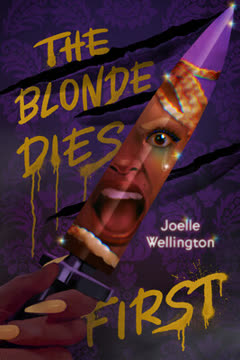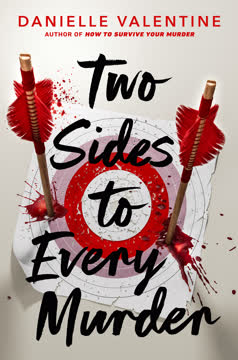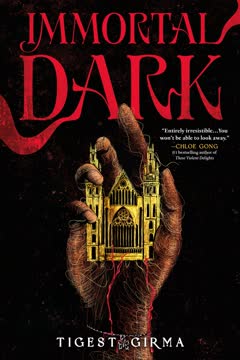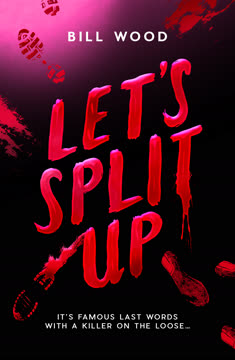Plot Summary
Bleach, Braids, and Beginnings
Devon Harris, a creative, impulsive Brooklyn teen, sits with her best friend Leila, bleaching her eyebrows in preparation for a party. The air is thick with anticipation and the ache of change: her twin sister Drew, the family genius, is graduating early and leaving for college. Devon is determined to make this the "Best Summer Ever" for Drew, crafting a list of adventures to keep their bond strong. Their tight-knit friend group—Leila, Malachi, Gael, and Yaya—gathers, each with their own quirks and histories. The summer's promise is shadowed by the looming presence of gentrification, embodied by neighbor Kendra and her awkward son Keith, and by the unspoken fear that everything is about to change.
The Best Summer Ever List
Devon's "Best Summer Ever" list is more than a set of activities—it's her desperate attempt to keep her world from unraveling. She wants to bridge the growing gap between herself and Drew, who's been drifting into a new, private-school world. The list includes parties, zoo trips, and block parties, but beneath the surface, it's about preserving friendships and family. Devon's anxiety about Drew's departure is palpable, and her need for control manifests in her meticulous planning. The group's dynamic is tested as they prepare to attend a party thrown by Drew's private-school friends, a world foreign to most of them.
Party with Strangers
The group travels to Carroll Gardens for Drew's graduation party, hosted by her friend Avery. The party is a collision of worlds: Devon and her friends feel out of place among the wealthy, insular private-school kids. Drew seems transformed, more "Andrea" than the sister Devon knows. Tensions simmer as Devon tries to fit in, encountering microaggressions and awkward flirtations. The night takes a strange turn when Avery, eager to impress, proposes a Ouija board séance with a mysterious athame knife. The group's skepticism is overpowered by peer pressure and the desire to please Drew, setting the stage for something dark to enter their lives.
Summoning and Shadows
The Ouija board session, meant as a party trick, becomes unsettlingly real. The athame, a knife with a history, is used as a planchette. The group jokes, but the board's answers grow eerily specific, focusing on Drew. When Yaya's rosary snaps and a candle flickers out, unease spreads. The session ends without proper closure, and Gael warns that they've broken a horror movie rule by not saying goodbye to the spirit. The group brushes it off, but a sense of dread lingers. Devon, trying to keep the peace, ignores her own discomfort, not realizing that something has followed them home.
The First Death
Devon's late-night shift at the bodega with her annoying coworker Alexis turns deadly. After a tense argument, a monstrous, shadowy figure—impossibly tall, with too many fingers—emerges from the freezer. Devon and Alexis flee, but the creature pursues them onto the street. In the chaos, Alexis is thrown into the path of an oncoming car and killed. Devon, traumatized, tries to explain what happened, but the police dismiss her story as shock or psychosis. The surveillance cameras miss the supernatural details. Devon is left with guilt, fear, and the chilling certainty that the thing was after her.
Disbelief and Doubt
Devon's friends and family struggle to comfort her, but her account of a demon is met with skepticism. Drew, ever logical, tries to reason it away, while Leila and Malachi offer sympathy but not belief. Devon's sense of isolation deepens, especially as she realizes the demon's attack was real and targeted. The group tries to move on, but Devon is haunted by the memory and the feeling that she's marked. The summer's lightness is gone, replaced by anxiety and suspicion. The cracks in the group's unity begin to show.
Demon in the Freezer
Malachi's date at a queer club turns nightmarish when the demon reappears, this time disguised as his online hookup. The creature attacks, nearly killing Malachi, but he and Devon escape. The group finally believes Devon's story, and panic sets in. They realize the demon is following a pattern, targeting them one by one. Gael, the horror movie buff, recognizes the structure: they're living out the plot of a supernatural slasher, with each friend fitting a classic trope. The group scrambles to understand the rules and how to survive, but the demon is always one step ahead.
Team Meeting: Survival Rules
The friends convene a "team meeting" to strategize. Gael lays out the horror movie rules: don't split up, don't break the group's moral code, and beware the "kill order." They consult a local horror expert, who confirms that the demon is following the logic of a cursed object and a movie's narrative. The athame, the knife from the party, is the key to defeating it. The group realizes they must stick together, avoid vice, and prepare for a final confrontation. But trust is fraying, and the pressure exposes old wounds and secrets.
The Movie Becomes Real
The group pieces together that the demon is killing according to the order of horror movie tropes: the blonde, the queer kid, the asshole, the nerd, the independent one, and finally the "Final Girl." Each attack is accompanied by the demon taking a "trophy" from the victim. The friends scramble to protect each other, but the demon adapts, exploiting their weaknesses and divisions. Drew's insistence on logic clashes with Devon's intuition, and the group's unity is tested as the body count rises. The line between fiction and reality blurs, and survival becomes the only goal.
The Demon's Kill Order
As the demon's attacks escalate, the group debates who fits which trope. Yaya, the kind, driven dancer, is pegged as the "Final Girl," but the demon's focus on Devon suggests a twist. The friends attempt to lure the demon and kill it using the athame, but their plan backfires, resulting in Leila's injury and more chaos. The demon's intelligence and adaptability become clear—it's not just following a script, it's hunting them with purpose. The group's trust in each other is shaken, and Devon and Drew's sibling rivalry comes to a head.
Failed Experiments
The group's attempts to outsmart the demon lead to disaster. Leila is badly hurt, and the friends are forced to confront the limits of their knowledge and bravery. Drew's plans, rooted in logic and control, fail to account for the demon's unpredictability. Devon, wracked with guilt, realizes that survival may require sacrifice. The friends' relationships are strained to the breaking point, and the demon grows stronger with each failure. The sense of doom is overwhelming, and hope seems out of reach.
Fractures and Friendships
In the aftermath of Leila's injury, the group is forced to reckon with their personal issues. Devon and Drew's long-simmering conflict erupts, revealing years of resentment, misunderstanding, and fear of abandonment. Yaya encourages Devon to be honest about her feelings, both for her friends and for Yaya herself. The group's survival depends on their ability to trust and support each other, but old wounds make this difficult. As the block party approaches, the friends prepare for a final showdown, knowing that not all of them may survive.
The Truth About Drew
Devon and Drew finally have the conversation they've avoided for years. Drew confesses her uncertainty about the future and her fear of not living up to expectations. Devon admits her own insecurities and the pain of feeling left behind. The sisters realize that their bond is both their greatest strength and their biggest vulnerability. They agree to face the demon together, united at last. The group regroups, determined to end the nightmare and reclaim their summer.
Final Girl Revealed
The group's plan for the block party is set: lure the demon, use the athame, and let the "Final Girl" deliver the killing blow. But as the confrontation nears, it becomes clear that Devon—not Yaya—is the true Final Girl. Her journey from self-doubt to courage mirrors the arc of every horror heroine. The friends rally around her, each playing their part. The stage is set for a battle not just for survival, but for identity, friendship, and the right to define their own story.
The Real Monster Next Door
In a shocking twist, the demon is revealed to be controlled by Keith, manipulated by his mother Kendra, who resents the neighborhood's resistance to change. Kendra's bitterness and Keith's longing for acceptance have unleashed the supernatural horror. The demon's attacks were never random—they were targeted, personal, and rooted in real-world tensions. The friends must confront not just the monster, but the human failings that allowed it to thrive. The final battle is as much about community as it is about survival.
Showdown at the Block Party
The block party becomes the battleground for the ultimate fight. Devon, armed with the athame and the support of her friends, faces Keith and Kendra in a brutal, chaotic showdown. The demon, now fully unleashed, is both supernatural and all too human. Sacrifices are made, secrets are exposed, and the friends' unity is tested to the limit. In the end, Devon's courage and the group's love for each other prove stronger than the demon's hunger. The athame delivers the final blow, and the nightmare ends.
Aftermath and Apologies
With the demon defeated, the friends are left to deal with the consequences. Leila recovers from her injury, and the group faces punishment from their parents. The neighborhood begins to heal, but the scars of the summer remain. Devon and Drew, now closer than ever, reflect on what they've learned about themselves and each other. The friends reaffirm their bond, knowing that they've survived something extraordinary together. The block party, once a symbol of change and loss, becomes a celebration of resilience and community.
Sisters, Reunited
Devon and Drew, sitting side by side, finally find peace in their relationship. They acknowledge their mistakes, forgive each other, and look forward to the future. The summer's trials have transformed them, making them stronger and more honest. The sisters promise to keep walking together, no matter where life takes them. Their friends join them, and the group basks in the warmth of survival, love, and hard-won understanding.
Love, Survival, and Summer's End
As the block party winds down and the ice-cream truck returns, Devon and Yaya share a quiet moment, their feelings for each other finally out in the open. The friends, battered but unbroken, savor the last moments of summer. The demon is gone, but the lessons remain: about courage, friendship, and the power of telling your own story. The "Best Summer Ever" wasn't what Devon planned, but it was unforgettable. The future is uncertain, but for now, they have each other—and that's enough.
Characters
Devon Harris
Devon is the narrator and emotional heart of the story. A Black teen from Brooklyn, she's defined by her creativity (crochet, bold style), her deep attachment to her twin sister Drew, and her fear of change. Devon's journey is one of self-doubt to self-acceptance: she starts the summer desperate to hold her world together, crafting the "Best Summer Ever" list to keep her friends and family close. Her rivalry with Drew is rooted in insecurity and fear of abandonment, but through trauma and honesty, she finds her own strength. Devon's love for Yaya is a quiet, persistent thread, and her eventual courage in facing the demon—and her own feelings—marks her as the true "Final Girl." Her arc is about learning to trust herself, embrace change, and step into the spotlight.
Drew Harris
Drew is Devon's identical twin, but their differences are stark. The family genius, Drew is logical, ambitious, and often emotionally distant. Her early graduation and secret uncertainty about the future drive much of the story's tension. Drew's need for control and her tendency to intellectualize everything put her at odds with Devon's intuition. Their relationship is fraught with misunderstanding and unspoken pain, but also deep love. Drew's arc is about vulnerability: admitting she doesn't have all the answers, forgiving herself and her sister, and learning to believe in things she can't see. Her journey mirrors Devon's, and their reconciliation is the story's emotional climax.
Yaya Powell
Yaya is the group's moral center and Devon's longtime crush. A talented dancer with a perfectionist streak, Yaya is both nurturing and self-critical. She's the "good girl" who always tries to do the right thing, but struggles with her own fears and insecurities. Yaya's role as the supposed "Final Girl" is subverted when Devon steps into that position, but her courage and compassion are vital to the group's survival. Her relationship with Devon is a slow-burn romance, built on years of friendship and unspoken longing. Yaya's arc is about embracing her own worth, accepting love, and finding strength in vulnerability.
Leila Benady
Leila is Devon's best friend and the group's resident artist. Jewish and quick-witted, she's the first to call out bullshit and the last to abandon a friend. Leila's loyalty is unwavering, but she struggles with her own need for control and her fear of being left behind. Her injury during the demon's attack is a turning point, forcing the group to confront the limits of their plans and the reality of danger. Leila's humor and honesty are a balm for the group, and her friendship with Devon is a model of unconditional support.
Malachi
Malachi is Devon's cousin-not-cousin, a gay Black teen who wears his heart on his sleeve. He's always searching for love, sometimes recklessly, and his vulnerability makes him both endearing and at risk. Malachi's near-death experience with the demon is a wake-up call for the group. He's the first to believe Devon, and his willingness to sacrifice for his friends is a testament to his loyalty. Malachi's arc is about learning to balance risk and self-preservation, and his humor and warmth are essential to the group's dynamic.
Gael
Gael is the group's film nerd, always ready with a reference or a rule from horror movies. His bravado masks deep fears and insecurities, and his knowledge becomes both a weapon and a liability as the demon's attacks escalate. Gael's arc is about moving from detachment to engagement—realizing that life isn't a movie, and that real courage means caring, risking, and sometimes failing. His friendship with Leila is a highlight, and his willingness to take responsibility for mistakes is a mark of growth.
Alexis
Alexis is Devon's coworker and the first victim of the demon. Her death is a turning point, shattering the group's sense of safety and forcing them to confront the reality of the supernatural threat. Alexis's role is that of the "blonde who dies first," but her humanity and vulnerability are revealed in her final moments. Her death haunts Devon and sets the tone for the rest of the story.
Avery
Avery is Drew's private-school friend and the host of the fateful party. His interest in the occult and his possession of the athame set the plot in motion. Avery's relationship with Drew is complicated by unspoken feelings and misunderstandings. He represents the allure and danger of new worlds, and his actions—intentional or not—bring the demon into the group's lives.
Kendra Thompson-Bryant
Kendra is the gentrifying neighbor, mother to Keith, and the mastermind behind the demon's release. Her bitterness toward the neighborhood and her desire for control drive her to manipulate supernatural forces. Kendra's actions are rooted in real-world tensions—class, race, and belonging—and her willingness to sacrifice others for her own goals makes her the story's human monster. Her downfall is a cautionary tale about the dangers of resentment and the cost of disconnection.
Keith
Keith is Kendra's son, a perpetual outsider with a long-standing crush on Yaya. His loneliness and desire for acceptance make him vulnerable to his mother's manipulation. When he becomes the demon's vessel, his transformation is both literal and symbolic: the boy no one noticed becomes the monster everyone fears. Keith's arc is a dark mirror of the group's struggles with identity and belonging, and his end is both tragic and terrifying.
Plot Devices
Horror Movie Structure
The novel's central device is its meta-awareness of horror movie tropes. The demon attacks the group in the order of classic slasher archetypes: the blonde, the queer kid, the asshole, the nerd, the independent one, and the Final Girl. This structure is both a source of tension and a commentary on representation, survival, and agency. The group's attempts to outsmart the demon by following or subverting the rules become a reflection of their own struggles with identity and control.
The Athame and the Ouija Board
The athame, a knife with a dark history, and the Ouija board are the literal and symbolic keys to the demon's entry. Their use at the party is a moment of collective transgression, opening the door to supernatural horror. The athame's role as both a weapon and a symbol of division and unity is central to the plot. Its return and use in the final battle tie together the themes of history, responsibility, and agency.
Possession and Substitution
The demon's attacks are marked by the taking of "trophies" from each victim, echoing the idea of possession and substitution. When the demon can't kill its intended target, it takes someone close—a stand-in. This device heightens the stakes and underscores the interconnectedness of the group. The final twist, revealing Keith as the demon's vessel, subverts expectations and grounds the horror in real-world alienation and resentment.
Sibling Rivalry and Reconciliation
The emotional core of the novel is the relationship between Devon and Drew. Their rivalry, rooted in fear, insecurity, and love, is mirrored in the group's struggles with trust and survival. The story's structure—alternating between action and introspection—allows for deep psychological exploration. The sisters' reconciliation is both a personal victory and a metaphor for the group's survival: only by facing the truth and forgiving each other can they defeat the monster.
Meta-Commentary and Self-Awareness
The novel is deeply self-aware, with characters referencing horror movie rules, discussing tropes, and even consulting a local horror expert. This meta-commentary is both playful and profound, inviting readers to question who gets to survive, who gets to be the hero, and how stories shape our understanding of ourselves. The final "post-credits" scene, with the demon's suit twitching, is a wink to the endless cycle of horror and the power of narrative closure.
Analysis
The Blonde Dies First is a sharp, self-aware blend of supernatural horror and contemporary coming-of-age, using the language of slasher films to explore the anxieties of growing up, friendship, and belonging. Joelle Wellington crafts a narrative where the real monsters are as much internal—fear, resentment, the pain of change—as they are external. The demon's attacks, following the logic of horror movie tropes, become a metaphor for the pressures teens face: to fit a role, to survive in a world that feels hostile, to hold on to relationships as everything shifts. The story's heart is the relationship between Devon and Drew, whose rivalry and reconciliation mirror the group's journey from fragmentation to unity. The novel interrogates who gets to be the "Final Girl"—who gets to survive, to tell the story, to define themselves outside of stereotypes. By centering Black, queer, and diverse voices, Wellington subverts the genre's history and offers a new vision of heroism: one rooted in vulnerability, honesty, and community. The ending, with its mix of closure and lingering threat, reminds us that survival is ongoing, and that the stories we tell—about ourselves, our friends, our neighborhoods—have the power to save or destroy.
Last updated:
Review Summary
The Blonde Dies First received mixed reviews, with an average rating of 3.56/5. Many praised the diverse friend group dynamics, queer representation, and humor. Readers enjoyed the blend of horror tropes and contemporary themes. Some found the pacing slow at first but appreciated the campy, fun tone. Critics felt the horror elements were underdeveloped and predictable. The book was generally viewed as an entertaining YA read, though some adult readers found it less engaging than Wellington's previous work.









